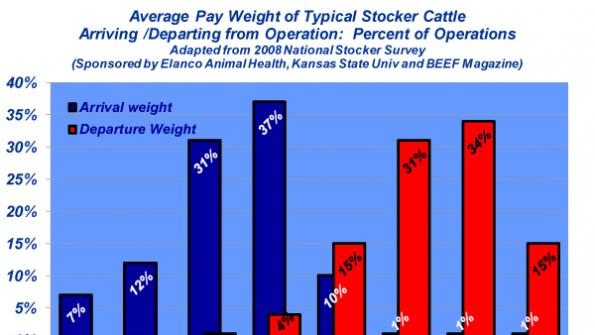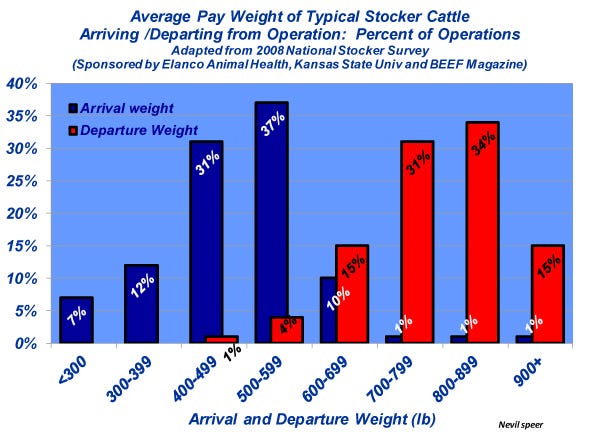Industry At A Glance: What Do Stocker Pay-Weight Trends Portend?
Are we on the cusp of seeing some major shifts in buying behavior for feeder cattle?
October 3, 2013

The 2008 National Stocker Survey (sponsored by Elanco Animal Health, Kansas State University and BEEF magazine) provides a comprehensive appraisal of the U.S. stocker industry. That data allows for some interesting insight into major trends and strategies of respondents. It’s a snapshot that’s important both in developing a background for and an assessment of the beef industry in general going forward.
With that in mind, one of the key aspects within the data revolves around pay-weight trends – namely, the difference between arriving and departing weights. That data itself isn’t surprising: most operations receive cattle between 400- 600 lbs., and ship cattle out at 700-900 lbs.
But now consider those trends within the context of the past three monthly Cattle on Feed reports. Despite declining corn prices, cumulative feedyard arrivals during June, July and August total about 5.1 million head, vs. nearly 5.6 million head in 2012 (a 9% decline).

Many factors are contributing to that slowdown, including fewer available cattle and better grass conditions in 2013. Perhaps, though, it might represent the start of a shift in buying behavior at the feedyard level. Most notably, feedyards are increasingly managing their capital very carefully following a prolonged run of negative closeouts.
Historically, given the current improvement in the crush (deferred fed cattle less cost of feeder cattle and corn), cattle feeders would have chased replacements. That’s not occurred during the past several months in 2013.
If that trend continues, there’ll be some important implications on placement weights and stocker strategies in the future. Are we on the cusp of seeing some major shifts in buying behavior? Will the departing pay-weight percentage shift to the right among stocker operations? How do you see all this playing out? Leave your thoughts below.
You might also like:
80+ Photos Of Our Favorite Calves & Cowboys
Cow-Calf Production Is Largely A Part-Time Business
Readers Show The Love For Their Ranch Sweethearts
Use Of Sexed Semen In Dairy Cows Could Help Beef Calf Numbers
About the Author(s)
You May Also Like




.png?width=300&auto=webp&quality=80&disable=upscale)
